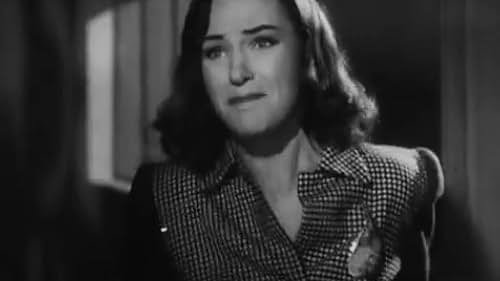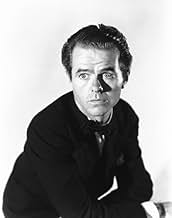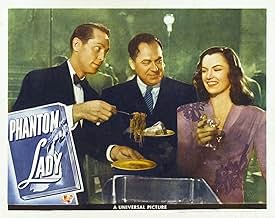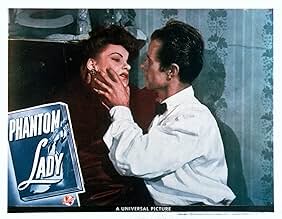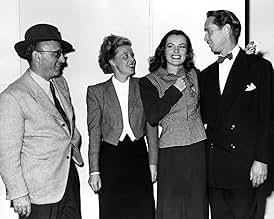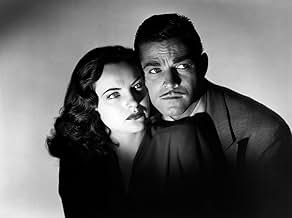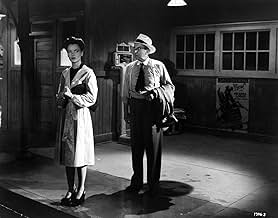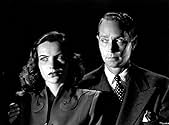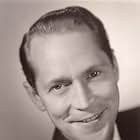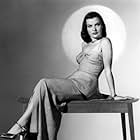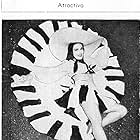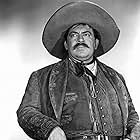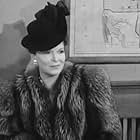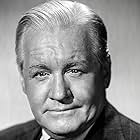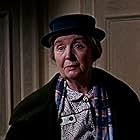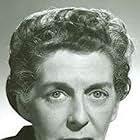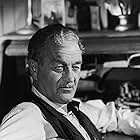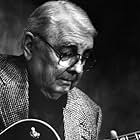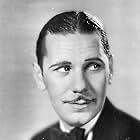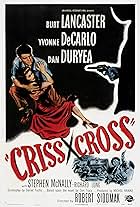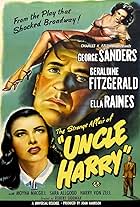IMDb RATING
7.2/10
5.9K
YOUR RATING
A devoted secretary risks her life to try to find the elusive woman who may prove her boss didn't murder his selfish wife.A devoted secretary risks her life to try to find the elusive woman who may prove her boss didn't murder his selfish wife.A devoted secretary risks her life to try to find the elusive woman who may prove her boss didn't murder his selfish wife.
Aurora Miranda
- Estela Monteiro
- (as Aurora)
Harry Adams
- Courtroom Spectator
- (uncredited)
Robert Bain
- Guitarist
- (uncredited)
Joan Bayley
- Dancer
- (uncredited)
Brandon Beach
- Theatre Party Guest
- (uncredited)
Brooks Benedict
- Theatre Party Guest
- (uncredited)
- Director
- Writers
- All cast & crew
- Production, box office & more at IMDbPro
Storyline
Did you know
- TriviaAlthough Franchot Tone is given top billing in this film, he does not appear for the first 45 minutes.
- GoofsDuring an overhead shot in the sequence where Kansas trails the bartender through a deserted street after he gets off work, the actors are clearly connected waist-to-waist by a thin wire - most likely so that the actress stayed an exact number of feet behind the actor to ensure both were in focus during what was apparently a tricky camera set-up.
- Quotes
Cliff: You and I are going to have fun tonight, Jeannie! You like jive?
Carol Richman: You bet! I'm a hep kitten!
- ConnectionsFeatured in CSI: Crime Scene Investigation: A Night at the Movies (2003)
- SoundtracksI'll Remember April
(uncredited)
Music by Gene de Paul
Lyrics by Patricia Johnston & Don Raye
[played during opening credits and throughout the movie]
Featured review
Phantom Lady is quintessential Film Noir and a must-see for anyone who appreciates the genre. The film is not, nor does it aspire to be, a whodunit with an airtight plot, or a mystery-thriller that ends with an inconceivable twist as in the original novel. If that is what you want or expect, this is probably not your cup of tea. Although many great films considered part of the noir genre may include some of these elements, that's not what film noir is all about.
Film Noir is almost synonymous with Cornell Woolrich (William Irish), the author of the novel Phantom Lady. His novels and short stories are the source of an amazing number of screenplays and teleplays, including several noir and non-noir classics such as Hitchcock's Rear Window.
As a writer and persona, Woolrich was a uniquely noirish sort of guy. In fact, he wrote a series of six "Black" novels, all have been adapted to the screen or TV at least once, and some multiple times. Obviously, noir means black, and these black novels inspire great noir films.
Many Woolrich stories, Phantom Lady is one, revolve around impossible crimes. As sinister forces close in, his protagonists are powerless do anything but follow some diabolical labyrinth that defies understanding. No wonder his work is a perfect fit for film noir, which takes place in its own dark universe, where characters struggle against powerful and malevolent forces. Unfortunately, the nightmare scenarios created by Woolrich, enhanced by his own inimitable style of description, often seem to get lost in translation when brought to the silver screen. Although most of the films are very good, these adaptations tend to be very different from their literary source.
Not so with Phantom Lady – up to a point. Although details may vary, director Robert Siodmak cleverly and adroitly uses dazzling Expressionist visuals and quirky character performances to emulate the dreamlike quality of a Woolrich story. A good example is the incredible scene where Elisha Cook Jr. drums up the sexual overtones for Ella Raines.
Since our psychotic mastermind is revealed early on, there is no who-done-it mystery to distract the audience. The revelation allows a brilliant means of reworking the story into a tight and infinitely more interesting screenplay. Woolrich's original story follows a different approach, not confirming the killer until the end. Obviously, some treatments work better as a novel than a movie.
Often over-shadowed in the movies which he appears, this time Franchot Tone fits so perfectly into the role of Jack Marlow that we are captivated by his machinations, wondering where it will all end. All of the other characters are great and true to form as well. Raines is exceptionally strong in her portrayal of the somewhat naive love-struck secretary who won't give up.
True to a Woolrich novel, the genius of the film is in the telling of the story; more important than structure or even the ending. Although the outcome is the same, the ending is much different in the novel. Also, after the killer is revealed in the original story, there are 16 long pages, explaining every detail of every plot twist. Unfortunately, this approach is anticlimactic, and would never work as a film. Nevertheless, Siodmak is able to present a more convincing story with almost no explanation.
Any screen adaptation of a Woolrich story is always in jeopardy of being swallowed up by massive plot holes. After all, part of the charm of a Cornell Woolrich story is that you never really know if you dealing with reality, or trapped in a drug and alcohol induced nightmare.
In Phantom Lady, a character reveals, " I'd been blazing a reefer already before it happened, and you know what that does to you." Woolrich certainly did know, and much of his literature is obviously inspired by mind-bending experiences. If a screenwriter and director can artfully breach the massive plot chasms of an original Woolrich story, yet still preserve the beauty as in Phantom Lady, the film becomes a feast for any Film Noir fanatic.
Film Noir is almost synonymous with Cornell Woolrich (William Irish), the author of the novel Phantom Lady. His novels and short stories are the source of an amazing number of screenplays and teleplays, including several noir and non-noir classics such as Hitchcock's Rear Window.
As a writer and persona, Woolrich was a uniquely noirish sort of guy. In fact, he wrote a series of six "Black" novels, all have been adapted to the screen or TV at least once, and some multiple times. Obviously, noir means black, and these black novels inspire great noir films.
Many Woolrich stories, Phantom Lady is one, revolve around impossible crimes. As sinister forces close in, his protagonists are powerless do anything but follow some diabolical labyrinth that defies understanding. No wonder his work is a perfect fit for film noir, which takes place in its own dark universe, where characters struggle against powerful and malevolent forces. Unfortunately, the nightmare scenarios created by Woolrich, enhanced by his own inimitable style of description, often seem to get lost in translation when brought to the silver screen. Although most of the films are very good, these adaptations tend to be very different from their literary source.
Not so with Phantom Lady – up to a point. Although details may vary, director Robert Siodmak cleverly and adroitly uses dazzling Expressionist visuals and quirky character performances to emulate the dreamlike quality of a Woolrich story. A good example is the incredible scene where Elisha Cook Jr. drums up the sexual overtones for Ella Raines.
Since our psychotic mastermind is revealed early on, there is no who-done-it mystery to distract the audience. The revelation allows a brilliant means of reworking the story into a tight and infinitely more interesting screenplay. Woolrich's original story follows a different approach, not confirming the killer until the end. Obviously, some treatments work better as a novel than a movie.
Often over-shadowed in the movies which he appears, this time Franchot Tone fits so perfectly into the role of Jack Marlow that we are captivated by his machinations, wondering where it will all end. All of the other characters are great and true to form as well. Raines is exceptionally strong in her portrayal of the somewhat naive love-struck secretary who won't give up.
True to a Woolrich novel, the genius of the film is in the telling of the story; more important than structure or even the ending. Although the outcome is the same, the ending is much different in the novel. Also, after the killer is revealed in the original story, there are 16 long pages, explaining every detail of every plot twist. Unfortunately, this approach is anticlimactic, and would never work as a film. Nevertheless, Siodmak is able to present a more convincing story with almost no explanation.
Any screen adaptation of a Woolrich story is always in jeopardy of being swallowed up by massive plot holes. After all, part of the charm of a Cornell Woolrich story is that you never really know if you dealing with reality, or trapped in a drug and alcohol induced nightmare.
In Phantom Lady, a character reveals, " I'd been blazing a reefer already before it happened, and you know what that does to you." Woolrich certainly did know, and much of his literature is obviously inspired by mind-bending experiences. If a screenwriter and director can artfully breach the massive plot chasms of an original Woolrich story, yet still preserve the beauty as in Phantom Lady, the film becomes a feast for any Film Noir fanatic.
- How long is Phantom Lady?Powered by Alexa
Details
- Release date
- Country of origin
- Languages
- Also known as
- Condemned to Hang
- Filming locations
- Production company
- See more company credits at IMDbPro
- Runtime1 hour 27 minutes
- Color
- Aspect ratio
- 1.33 : 1
Contribute to this page
Suggest an edit or add missing content


